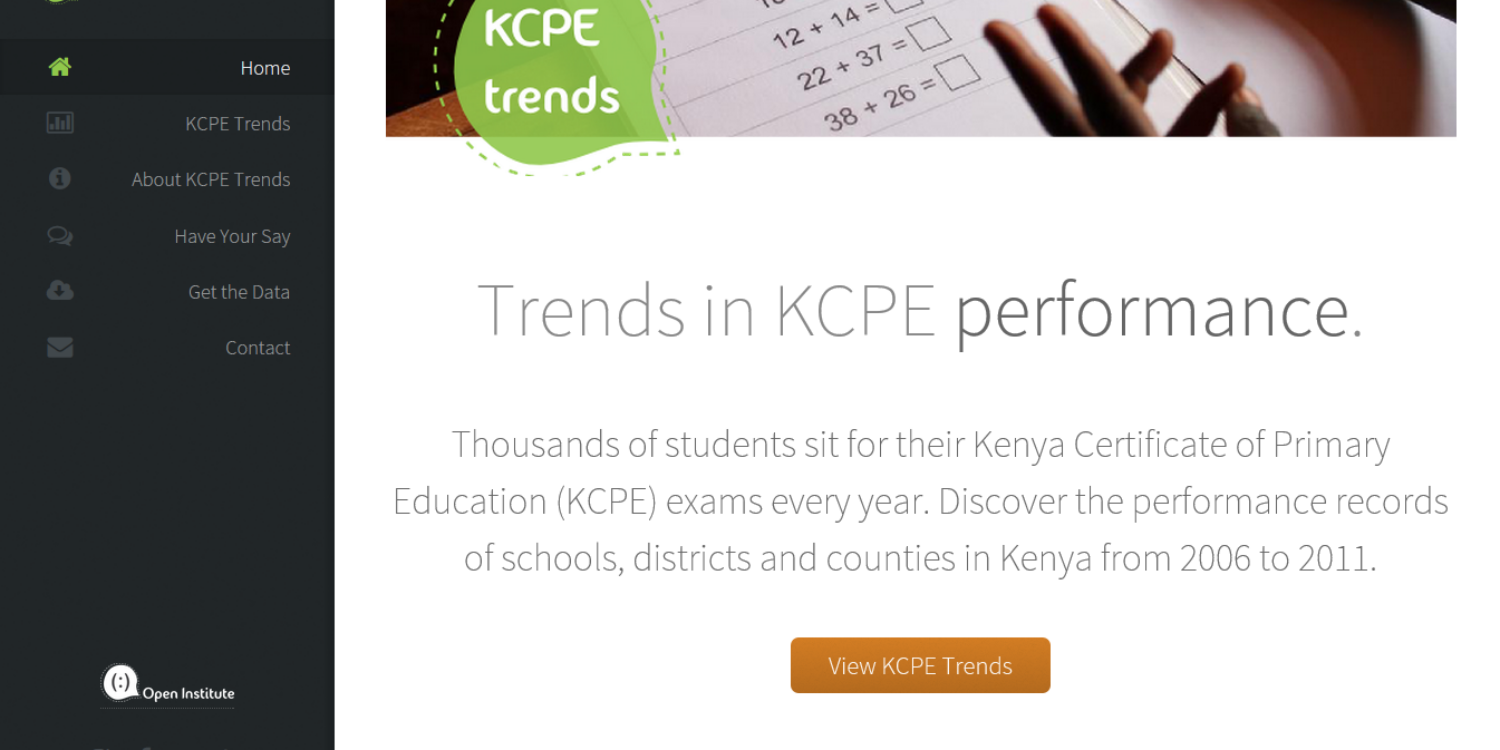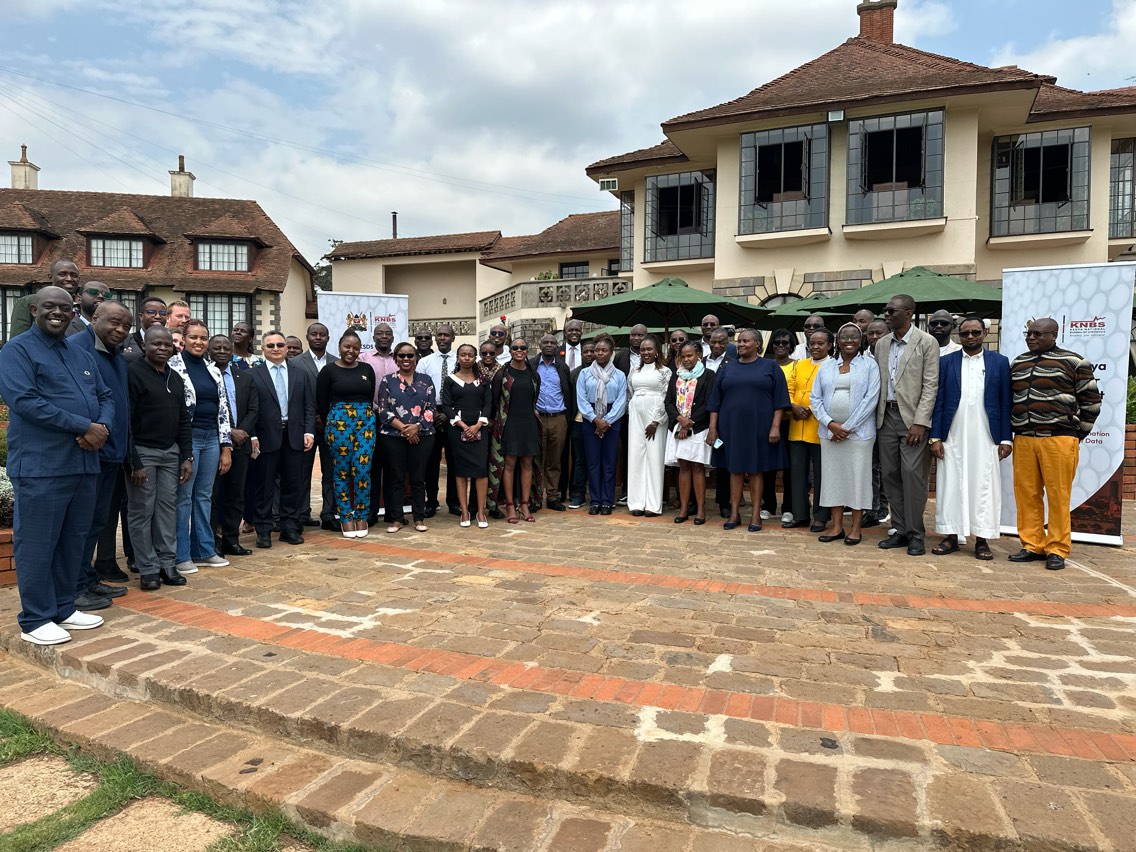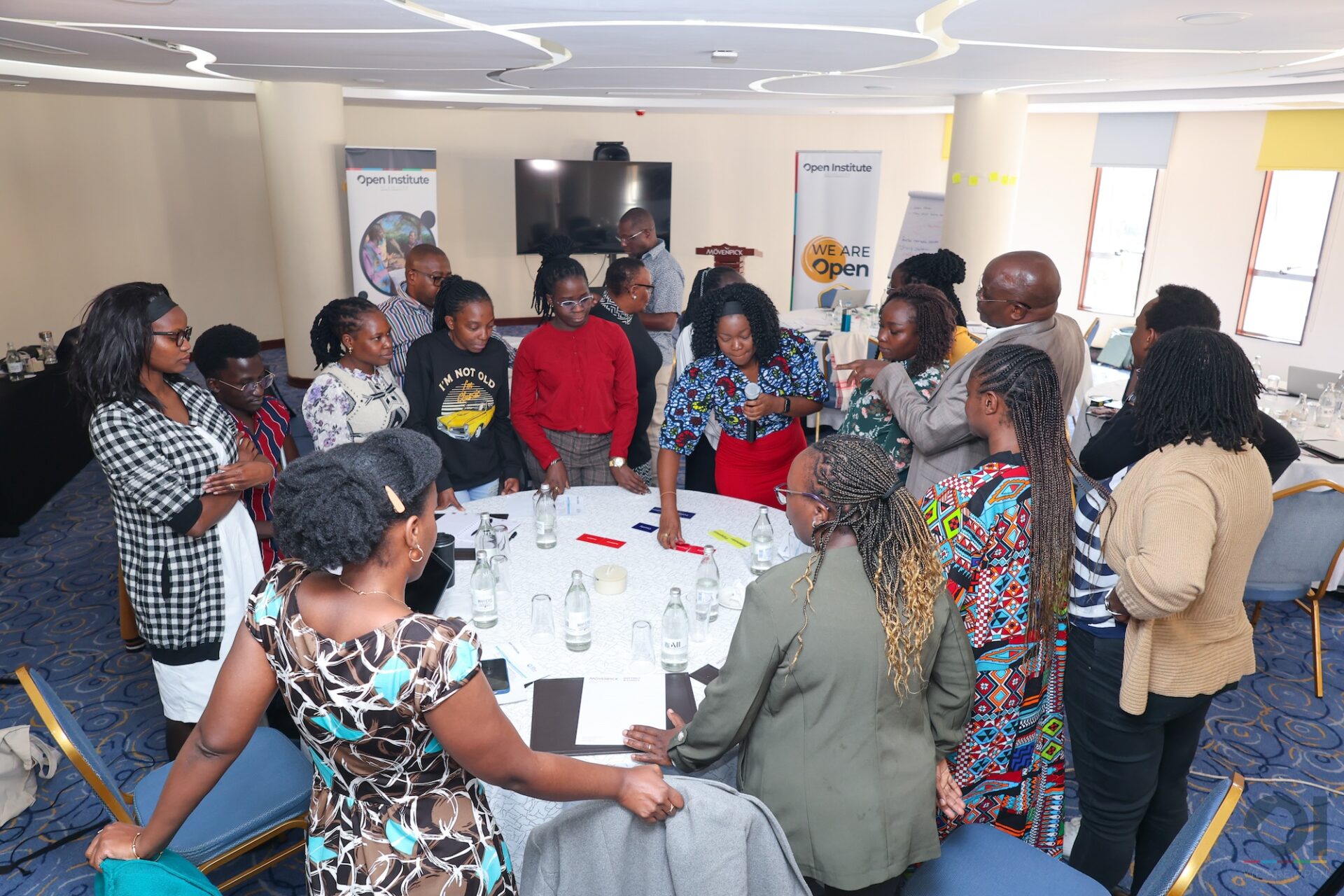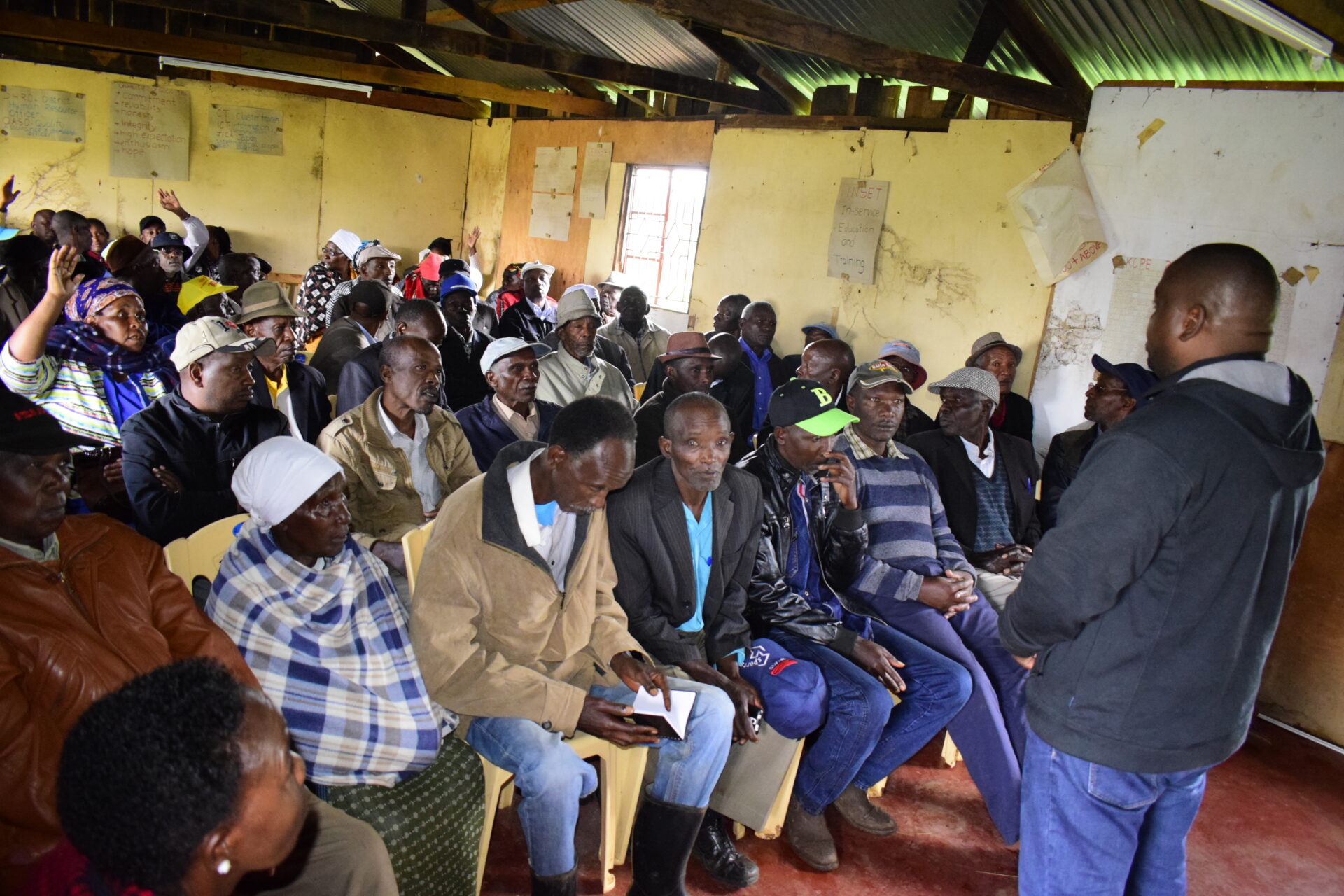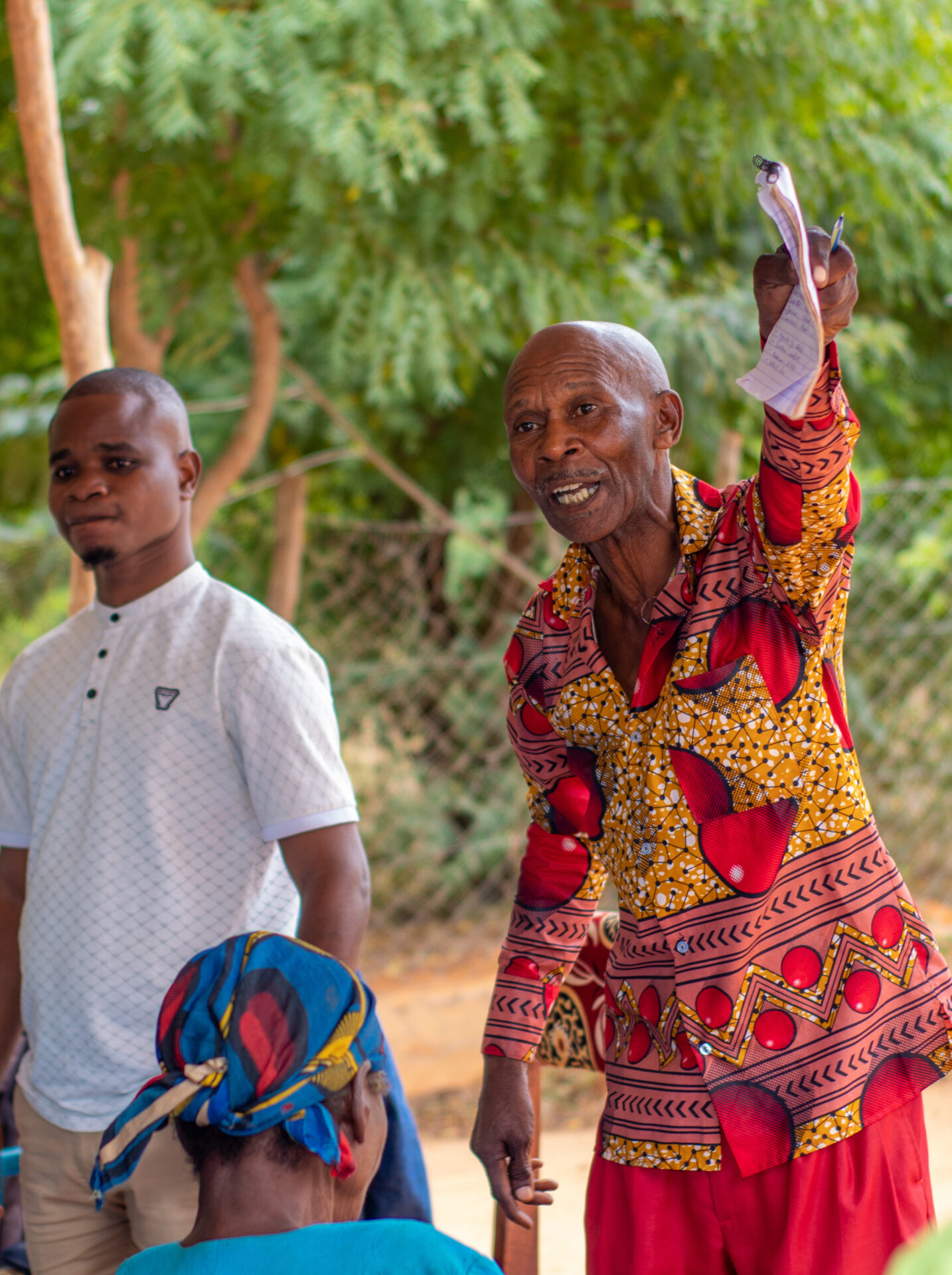This past week, as primary school pupils in Kenya started their Kenya Certificate of Primary Examinations (KCPE) – a landmark examination in any Kenyan’s life, we released some data that we have collected in recent months.
Through the Kenya Open Data Initiative and with the help of the Ministry of Education and Kenya’s National Examinations Council (KNEC), we collected and partly curated KCPE results data from 2006 to 2011. Once we had the data, we built a simple visualisation web app and released the data through this web site.
The idea for the site was simple: provide the public with a tool that provides general KCPE trends per school, county and district to infuse some data into the prevailing public discourse into how primary schools are performing in general, and what everyone’s role could be in making it better.
Having released the data, over the past week, we have seen people have various conversations online and offline about KCPE Trends – especially from the perspective of their own primary school alma mater and what they feel has influenced a change in performance of the primary school.
You can review some of this conversations on social media under the hashtag #KCPEtrends.
We went on the ground ourselves and spoke to citizens on the street and simply had a conversation about the data. They told us what their primary school is, we searched for the trends in their primary school and allowed them to react to it.
Here is a video of some of the interviews (forgive us: we haven’t put English subtitles for it but we will in due course)
We will be the first to admit that the data is not as clean as we would like it to be. Any user will see, for example, that in some schools, there is no data up to around 2009 and in others there is only data starting 2009. We decided to release the data anyway because first, it is still useful as a conversations aid (and we are all about fostering conversations) and secondly, it provides all of us (you and us) an opportunity to clean up the data together. We have seen for example people communicating with us letting us know that this primary school and that one are the same one so could we merge the data.
We learnt as we worked with this data that the public education sector in Kenya is managed in a way that mirrors the governance structures at the district, provincial and later county level. By 1992, there were 47 districts in Kenya. By 2009, they had grown to 256 amid calls for review and legal challenges to their creation. The High Court eventually ruled that 210 districts had been created in disregard to the law. However, by then, the government had adapted to their existence.
Governance structures created by the national government were imposed on the broader public sector resulting in each government ministry/department/agency mirroring the local administration’s structures. For instance, where the local administration had district commissioners and provincial commissioners, the Ministry of Education had Provincial Education Officers and District Education Officers. The Ministry of Health and those of Agriculture and Livestock followed the same lead.
To manage the administration of examinations in the country, the Kenya National Examination Council created a coding system that assigned a unique identifier to each school based on the province and district in which it was located. As new districts were created, some schools moved from one district to another within the local administration’s structures necessitating changes in other ministries, departments and agencies that rely on location information.
Consequently, between 2006 and 2011, some schools have more than one unique identifier at KNEC making it a little more difficult for us to follow the school’s performance trend over time. This is just one reason why some schools seem to ‘fall of the map’ and others reappear in the middle of the period. In some instances, schools don’t have students registered to sit examinations, especially in rural areas. In others, the school actually didn’t exist before.
So then, if you would like to work with us to help go through the data and clean it up so that we can make it even better, get in touch.
We are working to get even more data from Kenya National Examination’s Council and the Ministry of health so that parents can make informed choices and every citizen gets involved to make their primary school better.

